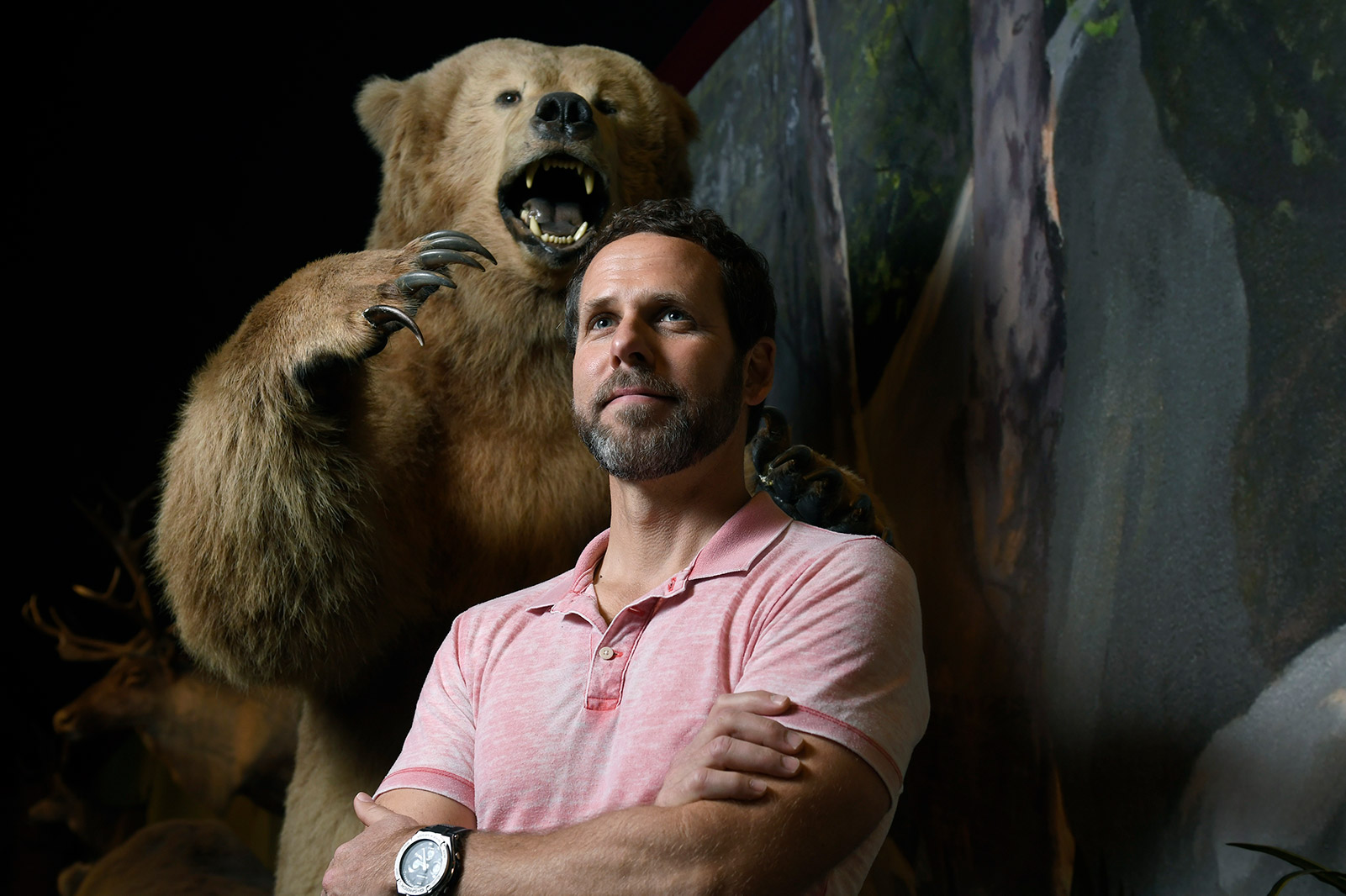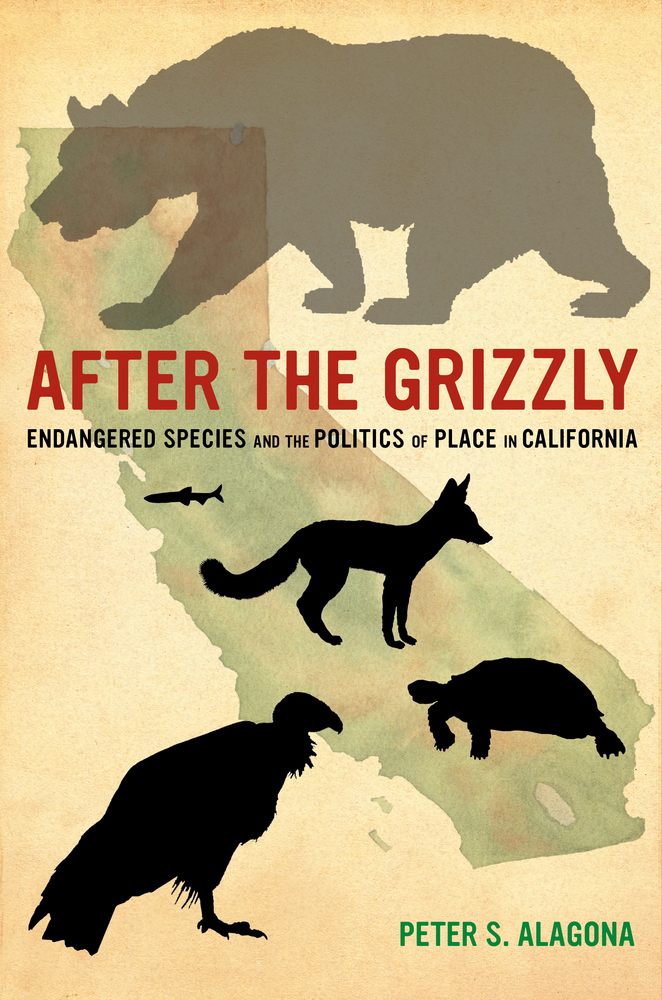Educating the Next Generation of Environmentalists
UCSB’s Peter Alagona on Teaching First-Year Students, Researching Wildlife in Cities, and Bringing Grizzlies Back

For decades, the environmental movement focused on despair: the next extinct animal, the latest eco-disaster, the uphill plight to save a threatened landscape against big money and bought-off politicians. That mentality can’t help but persist in this era of climate change, ocean acidification, and the last white rhino, but there is a new wave of environmental leaders working to bring hope and forward motion back to the equation.
Peter Alagona is one such voice. A professor of history, geography, and environmental studies at the University of California, Santa Barbara, Alagona is often the first teacher that an incoming first-year student meets, thanks to his fall-quarter class Introduction to Environmental Studies, which gives him the power to inspire like few others. But he’s also spearheading an effort to assess whether grizzly bears should be brought back to California, researching a book on how wildlife is thriving in American cities, and working to highlight environmental efforts that are cause for applause rather than tears, including the UC Natural Reserve System, which he helps manage.
“I feel like we’re so focused on these downward stories about how things are getting worse,” said Alagona last week, from his home on the Mesa. “Without being too Pollyanna about it, I think we have to make room for stories that empower people to make a difference. With the kids that I teach, you can’t just turn them off with doom and gloom — you’re gonna lose them.”
Tell me about that big class you teach each year. I teach the big Introduction to Environmental Studies class, with about 450 kids in it. We do some really creative things, even though it’s a large class. A lot of people complain about teaching those big service courses — they want to get to know their students and work directly with them, and I understand that. There are a lot of things limiting about the size. But on the other hand, I have an opportunity to change 450 people’s lives every year. I take that responsibility pretty seriously.
Is environmental studies still a popular track at UCSB? The environmental studies program has really grown tremendously, even since I’ve been here. In the last decade, it’s gone from 300 to close to 1,100 enrolled majors. It’s just exploded. It doesn’t show any signs of stopping either.
Why do you think that is? I wish I knew. Part of it is that UCSB has become a place you go for this, so we get students from around the state and country who are coming here for our program. And more kids are getting exposed to these issues earlier. There is more education about environmental issues in primary and secondary school — there’s not nearly enough, but kids are getting exposed to it. and they’re thinking about it.
Are the demographics changing? Our program is really starting to diversify. If you look go back 15 to 20 years ago, it was lily white. It was a bunch of upper-, upper-middle-class white kids. Now it’s not that way at all anymore. Over the past year, I’ve worked with close to a dozen undergrad research assistants, and all of them, except for maybe two, have been from traditionally underrepresented groups. Almost all of them have been women. So the face of the people who are getting into this is really changing, and I think that’s increasing enrollment also.

The last time we talked was more than four years ago, and it was about your book After the Grizzly, which was about endangered species. You’ve since created a group called the Grizzly Project. You guys are actually analyzing the reality of bringing the grizzlies back! The book talked about grizzlies in California, but I didn’t talk about reintroduction. I thought it was kind of frivolous. Then a year later, the Center for Biological Diversity† submitted a petition to the U.S. Fish & Wildlife Service to list grizzlies in California and the Southwest as endangered and start a reintroduction and recovery program. It was rejected on legalistic grounds, and it wasn’t a very good petition.
But the reason was because the last significant research done on grizzlies in California was published in 1955, over 60 years ago. I put a call out to a bunch of students and colleagues on campus, thinking that it might be fun to take a fresh look at the issue. We’ve been working on it the past two years, and now it’s expanding from a UCSB group to a statewide effort. There are a dozen projects going on right now. We’re looking at the issue from all perspectives: ecology, genetics, politics, education, history, geography. Where would you put them?
The goal is to answer the questions you would need to answer if you were going to have an intelligent and civil discussion about this and to set the stage for having that discussion.
I know it sounds crazy, but the further you look into it, the less crazy it sounds.
Because? One reason is that in Europe — which is about half the land area of the contiguous 48 states, and has a third larger human population and no wilderness areas — they’ve got about 10 times as many brown bears as we do. (Grizzly is just the American name for [a type of] brown bear.) What that tells me is that this is about the choices we make. California had more grizzlies than any other state other than Alaska. If we wanted to bring them back, we could do it. It’s not essential, but it’s possible.
It would certainly be a symbolic victory. In recent years, there have been all of these pressures weighing on conservation that are threatening to transform the basic premise of what conservation is. But what we lack is a positive vision for the future. It’s always about what is being lost and how to preserve the last thing.
This is an opportunity to think about an alternative future in which we actually do some repair, and bring this animal back to the state where, for a long time, it clearly belonged. Grizzlies showed up in California about the same time as people in the fossil record, and they were with us for at least 13,000 years. There were 10,000 grizzlies in California at the time of the gold rush. So it’s partly about bears, partly about restoration, but partly about imagining an alternative future.
What is your next book? I’m working on a book about wildlife in American cities. If you go back 100 years in North American cities, there was very little wildlife. There were no deer running around; there were very few middle-sized predators likes foxes and coyotes and even skunks. Now there are black bears and turkeys and large wading birds like herons and raptors that are everywhere — even marine mammals, which were almost totally obliterated almost 100 years ago.
So in American cities, people are living closer to medium- and large-bodied charismatic animals. This is happening at the same time as, globally, we are seeing a dramatic decline of biological diversity. Why are our cities filling up with wildlife at the same time that globally we are losing a lot of it? It’s a complicated story that took 100 or so years to unfold.
What are some of the reasons? Most big cities are in places that used to be very biologically diverse, so these are places where animals naturally come back. In the 19th century, cities filled up with domestic and feral animals, horses and cows and feral dogs, but they were cleared out by the early part of the 20th century. There was a short period when we got used to no free-roaming animals.
And then suburbanization destroyed habitat for many species but created habitat for others. Suburbs subsidize these animals with all kinds of food and water and shelter and resources, and there’s no hunting there. And then there are other factors, like the Endangered Species Act and habitat conservation plans and the new parks movement.
This flips everything on its head. For some species that can avoid the hazards and take advantage of the opportunities, cities are now serving like sanctuaries. A lot of creatures that can’t handle it get wiped out, but for those that can, cities have become kind of a boon.
It’s something that the ecological theory of a quarter century ago would not have predicted.
†Editor’s Note: Brian Segee with the Center for Biological Diversity stated the group never petitioned the U.S. Fish and Wildlife Service to list the grizzly in California or the Southwest, or for reintroduction. The center petitioned the agency to revise the federal recovery plan for grizzly bears and consider additional areas for recovery.



